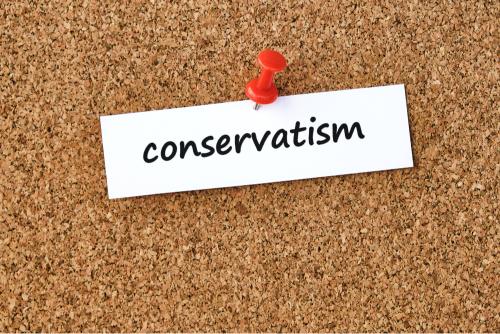HIST 1302 Section Assignment 4: Conservatism
Overview
Because this is a “Signature Assignment” for the College, you are required to write an essay for completion of this Section Assignment.
Instructions/Prompt
1. Utilize the provided “Conservatism” Reading Packet
2. Over the past forty years, the story of politics has been a turn to conservatism. Evaluate the extent to which the U.S. has turned “right/conservative” in the late 20th/early 21st century and argue if it has been beneficial to the nation.
Hint: Include the reasons for this “right” turn and its impact (cause and effect) on American life illustrating how it impacted politics, social movements, and the economy. Start with what the liberal consensus was, look at the causes during the 1950s-1970s (including Buckley), talk about Reagan Revolution, and end with how subsequent presidents including Clinton, W. Bush, and Obama).
3. Assignments need to have a minimum of six (6) direct quotations from the primary source reading documents, consisting of multiple viewpoints/speakers (i.e. not all should be from the same title/speaker/source)
4. All references must be cited using footnotes or a penalty will be assessed (see page 2)
Be sure to draw on the documents assigned as well as lecture notes and textbook readings in
developing your answer. Remember that the majority of your examples need to come from the
documents and that they need to be the basis for your argument.
Papers need to be posted to the appropriate turnitin.com link found on Blackboard, while digital stories MUST to be uploaded to YouTube and a working link (ensure it is not private) to the video link must be uploaded to the same Turnitin.com link as the essays. Please note that YouTube may take down any video that uses copyrighted music or videos. Please consult this “how to” video on uploading to YouTube: https://www.youtube.com/watch?v=Hlxqk0iHp5w
Option A: Traditional Paper
Instructions
Using the prompt, write a three to five page (approx. 1000-1500 words) typed and double spaced essay, with standard one inch margins, 12 point font, Times New Roman. Put your name on a separate title page, and do not include your name in a header or footer. Put page numbers on your document. Assignments that do not follow these straightforward instructions will be docked a letter grade. Late submissions will be penalized accordingly: For each day a project is late it will be reduced 1/3 of a letter grade (i.e. after 3 days, 10 points will be deducted). This includes holidays and weekends.
Make a clear argument and use concrete examples to demonstrate your contentions. The very best papers offer meaningful analysis and a compelling narrative. For a useful guide to writing a history essay, please consult the videos on Blackboard and the following pages that includes an outline. Essayists who try to cram this difficult but rewarding process into a short space of time are setting themselves up for DISASTER. Start early, work hard, and feel free to contact me with questions.
Quotations
All quotes must be cited using footnotes, i.e. the following example:
The provisional governor of the Louisiana Territory, Claiborne believed Frenchmen to be unworthy of U.S. citizenship. Writing to President Madison he stated, “The more I become acquainted with the inhabitants of this Province, the more I am convinced of their unfitness for a representative Government.’”[1]
(to create a footnote in Word or Google Docs, at the end of the sentence, click Insert, then click Footnote). The format is outlined below at the bottom of the page
All other material must be rendered completely in your own words.
See the following two examples of acceptable and unacceptable paraphrasing:
- Passage rendered word for word from the text: “Work-sharing festivals such as house raisings, log rollings, and quiltings gave isolated farm folk the chance to break their daily routine, to socialize, and to work for a common good.”
- Unacceptable paraphrase: Work-sharing opportunities including house construction, log gathering, and sewing gave detached farmers an opportunity to change their routine, to party, and to work for each other.
- Acceptable paraphrase: Farmers merged their social lives with their work lives to gain relief from the monotony of an agrarian existence. Examples of entertainment included communal endeavors such as home construction and quilting.
The major difference between the two paraphrasings is sentence structure and word choice. It is not sufficient to change a few words and retain the original sentence structure when paraphrasing. Writers must take the idea and put it in their own words, which means new sentence structure and significantly different word choices.
One final point on quoting: the wise student will not quote from the textbook. Save your quotes for the most provocative concepts contained within the original documents! As a rule, the language in the textbook is not worthy of being quoted.
- Since it is the documents you are analyzing to make your argument, you are better off spending time with them.
- Use the text and the lectures to make sure you understand the larger historical context.
Completion of the paper assignment requires consultation of no additional sources. You must not use Wikipedia or any other Internet source. Use only your assigned materials: the e-book, lecture notes, and the primary document readings available on Blackboard.
GRADING RUBRIC (for both digital story and essay):
- Uniformly excellent work—defined as including an original and insightful argument (thesis), substantial evidence derived from all assigned sources (the e-book, lecture notes, and primary document readings for the first three weeks)—but especially the primary document PDFs—to support that argument, and cleanly written prose—will receive an “A.” (Here substantial evidence means approximately 2-3 specific examples for each component of the question/body paragraph.)
- Work that is above average—defined as including a convincing but incomplete argument and evidence written with minor errors—will receive a “B.” It is impossible to score B or A range without substantive incorporation of the primary document PDFs. This means quoting from and explaining multiple documents.
- Work that is average—defined as including a weak or inadequate thesis, a summary of evidence without meaningful interpretation, minimal usage of evidence, and possibly some significant errors of grammar and/or organization—will receive a “C.” Furthermore, work with simple summaries of the primary document PDFs that do not engage the meaning of those documents will score C range.
- Work that is below average—defined as including no attempt at a thesis, weak generalizations in lieu of specific evidence, and possibly significant grammatical and/or mechanical problems—will receive a “D.” Work that does not engage at all the primary document PDFs will score D range if it otherwise addresses the topic in a generalized fashion and/or heavily relies solely on lecture notes
- Work that is failing—defined as including little or no understanding of the material and significant mechanical problems—will receive an “F.” This also includes work that does not make any mention of the primary document PDFs
College Historical Essay Outline
Writing Like a Historian
Historical thinking/writing is always about why/how something happened and its impact/legacy. You need to read and analyze the “why” and “how.”
- Intro paragraph:
- Context – Provide background of the prompt (provide the who, what, where, when, why of events that led up to the prompt) (Define Liberal Consensus and why it existed)
- Thesis argument (with at least 2-3 reasons/topics/themes/categories)
- 1st body paragraph: Topic sentence (elaborate on first thesis point/reason)
(Hint: look at Buckley, Goldwater, Schlafly, and Falwell)
- Provide a Specific Historical Example (S.H.E.) (direct quote, paraphrase, or concrete example) that supports your argument
- Explain S.H.E. (quotes are not self-sufficient, but need explanation and analysis)
- Repeat for 1-2 examples (a quality paragraph should have 2-3 examples)
- ANALYZE the evidence you described above and tie all back to thesis
- 2nd body paragraph: Topic sentence (elaborate on second thesis point/reason)
(Hint: Look at Reagan and how he got elected/what he did as president)
- Provide a Specific Historical Example (S.H.E.) (direct quote, paraphrase, or concrete example) that supports your argument
- Explain S.H.E. (quotes are not self-sufficient, but need explanation and analysis)
- Repeat for 1-2 examples (a quality paragraph should have 2-3 examples)
- ANALYZE the evidence you described above and tie all back to thesis
- 3rd body paragraph: Topic sentence (elaborate on third thesis point/reason)
(Hint: Look at legacy of Reagan Revolution in the 1990s and 2000s)
- Provide a Specific Historical Example (S.H.E.) (direct quote, paraphrase, or concrete example) that supports your argument
- Explain S.H.E. (quotes are not self-sufficient, but need explanation and analysis)
- Repeat for 1-2 examples (a quality paragraph should have 2-3 examples)
- ANALYZE the evidence you described above and tie all back to thesis
- Conclusion:
- Restate your argument using different words.
- Mention “the other side” of the argument (if you made a comparison, then contrast) and/or provide the legacy of the prompt/your argument
Be very specific. If you just mention a source connection briefly and move on,
you will NOT get credit
[1] “Claiborne to Madison, January 10, 1804,” The Evolution of American Citizenship: The Louisiana Purchase, 1803-1812, 112.
“Title of source,” speaker’s name, page (either of document or .pdf page number)
“Jews, Jews, Jews,” Propaganda Poster, 1937.

